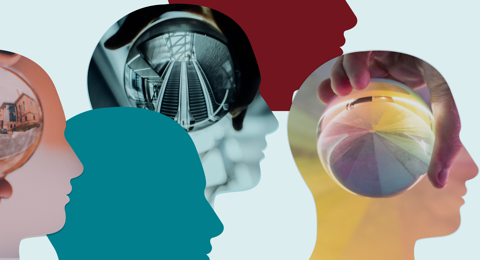Event
Recap
PLASTARC Webinar -School Days vs. Office Haze
Cultivating Lifelong Learning in the Multi-generational Workplace

Last month PLASTARC kicked off its fall webinar series with “School Days Vs. Office Haze.”
As the Class of 2023 enters the job market, PLASTARC’s goal is to help organizations keep recent graduates inspired and engaged in the office through thoughtful physical and social design. We are entering into a new era of work: for the first time, a generation of workers that completed a hybrid university education is entering the workforce; and this is also the first time the workplace will hold five different generations. With such a demographic breadth, offering an array of experiences will be more essential than ever.
Amy Rosen facilitated the conversation between Adam Griff, prominent strategist in the field of higher education who focuses on promoting student success through their environment; Aleksey Lukyanov-Cherny, architect and the founder of Rubin Hill Works; and Eve Klein, Doctoral Candidate of Environmental Psychology and Adjunct Professor at the Graduate Center (CUNY) and Pratt Institute, as well as the co-founder of AIA New York’s Social Science + Architecture Committee with PLASTARC’s founder Melissa Marsh.
Here are the central threads that emerged over the course of this conversation:
Every Space is a Learning Environment
“Every space is a learning environment,” said Klein who went on to outline that learning happens everywhere, informal or formal, some of our most essential moments of growth and understanding do not occur in a classroom, or office space. In the context of designing a space for ongoing learning at work, this means paying extra attention to informal environments in addition to office space - from lunch rooms, to water coolers.
Klein provided a useful analogy to this point – learning Spanish in a classroom context can confer basic skills and conversational practice over the course of a few years, but learning Spanish in an immersive context, such as while studying abroad or traveling, drastically accelerates the language-learning process. The benefits of total immersion can be optimized through thoughtful physical and social design techniques.
Design According to Your Needs
Griff defined the three primary types of learning that his studies have focused on:
• Disciplined, focused learning and mastery, which are common in higher education and professional experience.
• Interdisciplinary problem solving and critical thinking. An engineer, a designer, and an anthropologist may collectively use their respective backgrounds to understand the future of mobility, for example.
• Social learning, which is how we learn to behave, recognize social cues, and read others’ behavior.
Social learning is an especially key component of the future workplace. PLASTARC’s research demonstrates that sharing physical space in which workers can socialize, connect, and learn from each other directly leads to workers’ prioritization of in-office collaboration.
Constantly adapting a work environment in order to suit the specific needs of a younger generation also provides the opportunity for the workforce and workspace to evolve harmoniously.
Mitchel Resnik, for example, runs a group called Lifelong Kindergarten, which re-designed a black box theater space into an office where people could easily move between projects and subjects. This type of office design, however, would not serve a different sort of work environment, like a medical research lab or a call center.
“Not everyone can afford to build their own maker spaces, but just providing some diversity in terms of work environment can go a long way,” said Lukyanov-Cherny. In particular, a balanced mix of quiet spaces and collaborative spaces is the simplest step an organization can take to meet a diversity of needs.
The ability to choose a space that works best for an individual has a demonstrable impact on their work performance. And even if workers typically opt to work from home, the office space still remains essential. “If people aren’t going into the office space everyday, it makes it more important and special,” stated Griff, “because [working in-person] is even more intentional.”
Learning from Academia
Griff directed us to look towards college libraries, which have dramatically transformed in the last 20-30 years, as a perfect example of an informal third space in which creative scholarship, skill-building, collaboration, project-based work, and advising take place. Barnard’s recent library renovation exemplifies libraries’ recent evolution from homes for books and research to digitally-enabled, creative, and collaborative spaces for a diverse range of learning types.
When students graduate, they leave these well-established, highly supportive, and engaging learning institutions for a workplace that may have an entirely different set of priorities. This transition can often prove jarring – as a result, high turnover and low retention rates tend to be the norm in this younger age group. After years of a hybrid college or graduate experience, many students are experiencing screen burnout and eager to jump into more physical and communal workplace environments.
Lukyanov-Cherny pointed out that organizations should capitalize on this energy, which is at its highest as soon as students leave their educational institutions. This will help organizations prevent “hiring a new person every 6 months,” as they choose to keep “constantly learning from the younger generations.”
Safety is Essential
Klein’s daughter, who happened to attend Barnard, was required to take a seminar on how to use the maker space in the very library outlined above. With a lowered barrier of entry, she was able to use her knowledge of the maker space’s capabilities to shape her own independent learning experience.
In creating a learning focused work environment, comfort must always be prioritized: for some people, this may mean having the ability to work from home, whereas other people may need to work together in-person everyday. In a post-COVID world, organizations and teams will need to address these questions on a highly individualized basis. Empowering choice is critical.
In our next webinar, “From Psychological Safety to Inclusivity: Designing a Socially Sustainable Workplace,” we will continue to explore the importance of safety in the workplace, and expand our conversation to include emotionally and physically sustainable work environments. Join us on October 19th.

